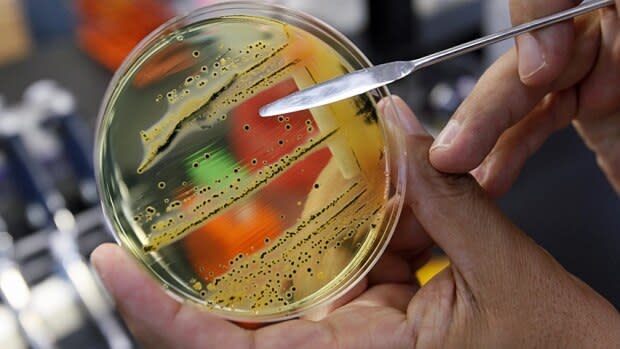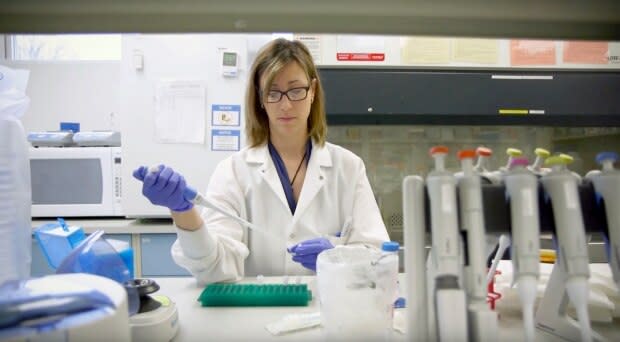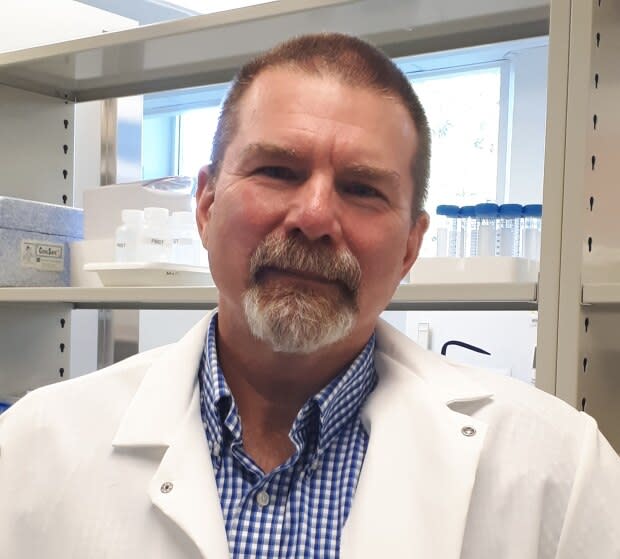How Canadian investigators use DNA to track down contaminated food
Experts say Canada has become a world leader in preventing illness and saving lives by tracking down the source of dangerous bacteria and other pathogens that invade the country's food supply.
The Canadian Food Inspection Agency can now do that work faster and more conclusively than ever before by decoding the genetic information of organisms like salmonella, Listeria and E. coli.
"That provides us with the ability to more effectively remove the contamination from the marketplace, thus protecting Canadians," said Mohamed Elmufti, the science leader in microbiology with the Canadian Food Inspection Agency.
Four million Canadians get sick from contaminated food every year, according to the inspection agency's website.
The agency's goal is to identify contaminated food that's making people sick and get it off store shelves as quickly as possible, before it makes anyone else ill. It then tries to prevent the contamination from reoccurring.

A process known as whole genome sequencing helps identify what's causing an illness. The technique allows the Canadian Food Inspection Agency to determine the complete DNA sequence of an organism's entire genome.
Once that's done, scientists know what kind of illness a particular organism can cause, and they can use its own DNA to track it.
If an organism on a food is also inside a person and has the same kind of DNA, then scientists know that particular organism made the person sick.
"This helps food safety investigators do a much better job of identifying the food vehicles that are making people sick and also identifying sources of contamination in the food manufacturing environment," said Burton Blais, who works in research and development at the Canadian Food Inspection Agency's Ottawa laboratory.

When combined with other investigative techniques, whole genome sequencing is an impressive tool for figuring out where a pathogen came from.
Whole genome sequencing also provides the agency with far more information than previous tests and can be done much faster. The old techniques of identifying an organism took days or even weeks, as samples had to be shuffled between different labs.
"It still boggles my mind to think how right now... we can take a bacterium and in less than two days, we have the entire genomic blueprint of that organism laid out in front of us," said Blais.
And those few days really matter.
"If you can shave off one or two days or three days in terms of making a recall decision, because you've identified the exact food that's causing the problem, that can make a huge difference in terms of public health outcomes," he said.

In the five years the agency has been doing this work, its scientists have sequenced 10,000 different bacterial pathogens including salmonella, Listeria and E. coli.
That kind of work has made Canada a world leader in using this technology to track pathogens, according to Lawrence Goodridge, a professor of food safety at the Canadian Research Institute for Food Safety, part of the University of Guelph.
Since so much food crosses the border between the United States and Canada, public health and food safety organizations in both countries have to work closely together to make sure all that food is safe.

"The United States I would say is a world leader in genomics and because we are right next to them and collaborate closely with them, that also means that we are a leader in the use of genomics for the use of food safety analysis," said Goodridge.
Genomics is a term used to describe the science of decoding genetic information in an organism's DNA. It looks at how genes function and interact with each other and influence growth and development, according to the inspection agency's website.
Genomics is different from genetics, which studies individual genes and how organisms inherit genetic traits like eye colour from one generation to the next.

Goodridge said these methods have already changed the way food is processed in Canada.
Since 2017, hundreds of Canadians have become sick after they ate food contaminated with salmonella. Some even became seriously ill.
The Canadian Food Inspection Agency was able to use whole genome sequencing, along with other investigative techniques, to track the source of the salmonella to raw breaded chicken products like chicken burgers and chicken strips.

To curb the problem, the agency put in new regulations requiring all manufacturers to reduce salmonella levels to below detectable amounts in breaded chicken products packaged for retail sale.
In most cases, that means the chicken will be cooked to kill the bacteria before its frozen and shipped out for sale.
"So this is one example within the last two years that really shows how whole genome sequencing has increased the safety of the Canadian food supply," said Goodridge.
MORE TOP STORIES


